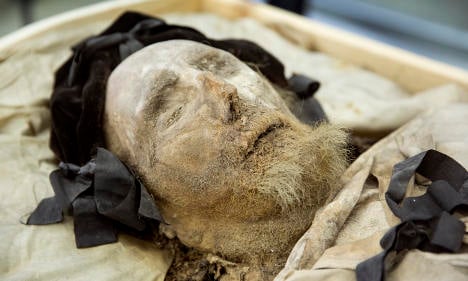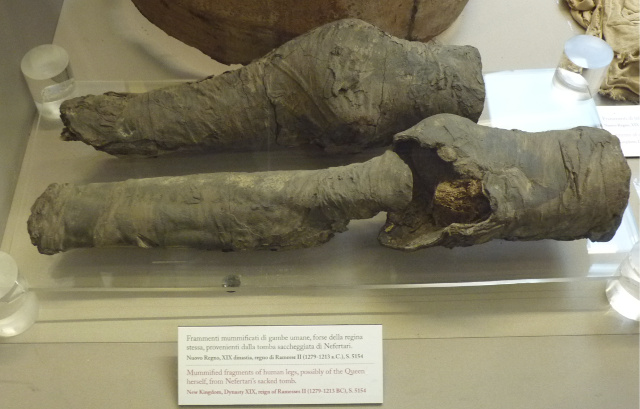BISHOP
Mummy bishop drives masses to Swedish town
A perfectly preserved mummified bishop who died in the 17th century and was unearthed last year has been given a second funeral, after crowds queued to see him at a museum in southern Sweden earlier this week.
Published: 11 December 2015 16:26 CET

The bishop photographed in April 2015. Photo: Ola Torkelsson/TT
The bishop, Peder Windstrup, died 336 years ago, and was taken out of his crypt at Lund Cathedral in southern Sweden in September last year.
He was returned on Friday along with the remains of a human fetus discovered at his feet and given a second traditional Lutheran funeral.
Windstrup's body is one of the best-preserved in Europe from the 1600s and is believed to have been mummified by the cold Nordic air rather than the embalming methods popular with Egyptians.
The coffin of the bishop, who was an influentual Lutheran church leader, was initially opened 15 months ago because the cathedral planned to bury him. But archaeologists and scientists campaigned to examine the body first, arguing that their findings could play an important role in medical research.
Unlike embalmed mummies which had their internal organs removed, most of Windstrup's insides remained intact and he was even given a CT scan at the city's University Hospital.
“His remains constitute a unique archive of medical history on the living conditions and health of people living in the 1600s”, Per Karsten, director of the Historical Museum at Lund University, said in a press statement in July this year.
The mummy went on display at Lund University's Historical Museum this week, with more than 3,500 people turning up to see him on Wednesday. The museum stayed open until 10pm to ensure as many as possible got a glimpse.
“This is as close as you can get to the 1600s,” Per Karsten, Lund University Historical Museum's Director, told Swedish newspaper Sydsvenskan earlier this week.
But he described the record turnout as “completely incomprehensible” and praised the public for queueing patiently to get in.
Url copied to clipboard!


 Please whitelist us to continue reading.
Please whitelist us to continue reading.